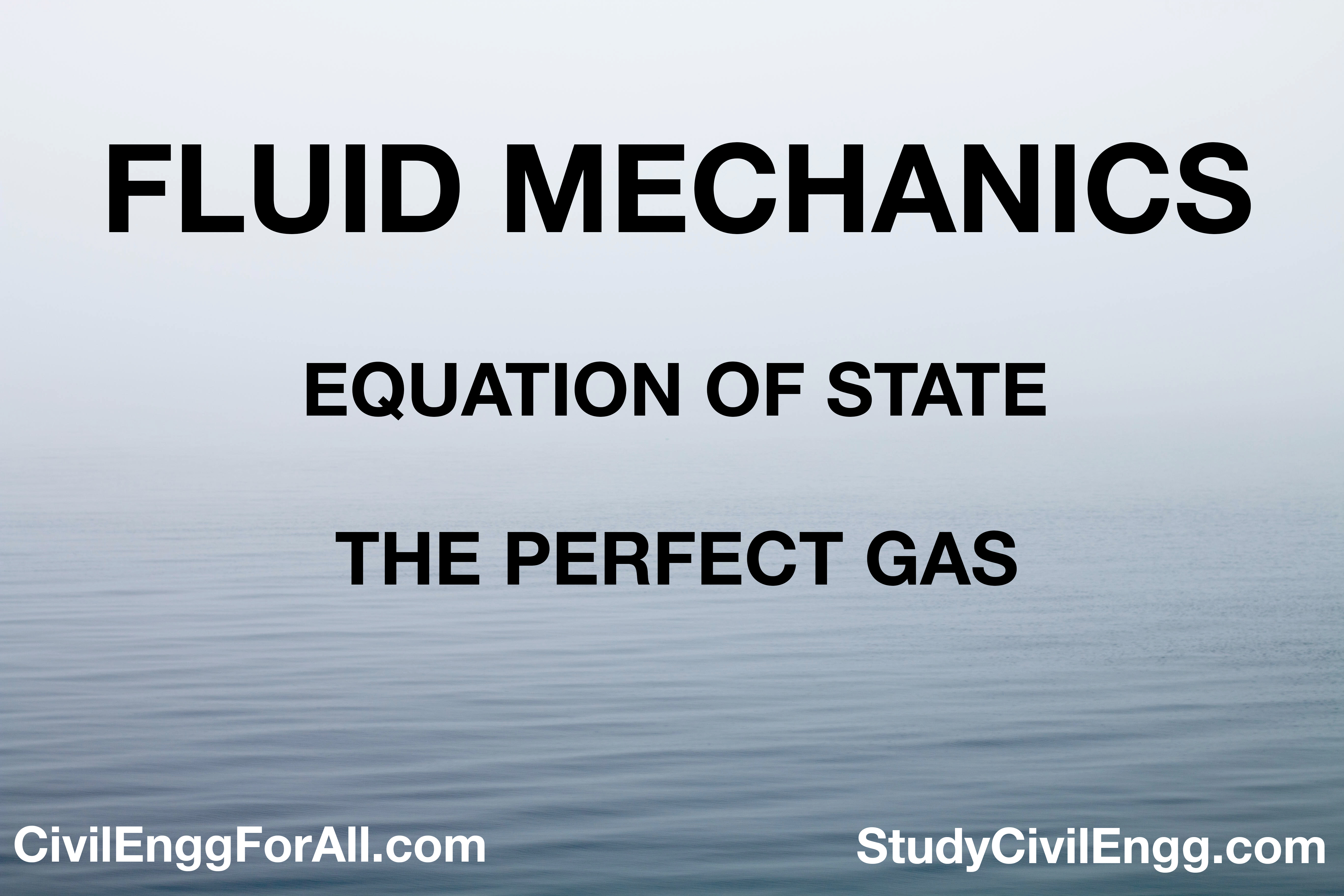EQUATION OF STATE : THE PERFECT GAS
EQUATION OF STATE - THE PERFECT GAS
SUBJECT : FLUID MECHANICS
The density ρ of a particular gas is related to its absolute pressure p and absolute temperature T by the equation of state, which for a perfect gas takes the form
p = ρRT; or pV = mRT .....(Equation 1)
in which R is a constant called the gas constant, the value of which is constant for the gas concerned, and V is the volume occupied by the mass m of the gas. The absolute pressure is the pressure measured above absolute zero (or complete vacuum) and is given by
pabs = pgage + patm
The absolute temperature is expressed in ‘kelvin’ i.e., K, when the temperature is measured in °C and it is given by
T°(abs) = T.K = 273.15 + t°C
No actual gas is perfect. However, most gases (if at temperatures and pressures well away both from the liquid phase and from dissociation) obey this relation closely and hence their pressure, density and (absolute) temperature may, to a good approximation, be related by Equation 1. Similarly air at normal temperature and pressure behaves closely in accordance with the equation of state.
It may be noted that the gas constant R is defined by Equation 1, as p/ρT and, therefore, its dimensional expression is (FL/Mθ). Thus in SI units the gas constant R is expressed in newton-metre per kilogram per kelvin i.e., (N.m/kg. K). Further, since 1 joule = 1 newton × 1 metre, the unit for R also becomes joule per kilogram per kelvin i.e., (J/kg. K). Again, since 1 N = 1 kg × 1 m/s², the unit for R becomes (m²/s² K)
In metric gravitational and absolute systems of units, the gas constant R is expressed in kilogram (f)-metre per metric slug per degree C absolute i.e., [kg(f)-m/msl deg. C abs.], and dyne-centimetre per gram (m) per degree C absolute i.e., [dyne-cm/gm(m) deg. C abs.] respectively. For air the value of R is 287 N-m/kg K, or 287 J/kg K, or 287 m²/s² K.
In metric gravitational system of units the value of R for air is 287 kg(f)-m/msl deg. C abs. Further, since 1 msl = 9.81 kg (m), the value of R for air becomes (287/9.81) or 29.27 kg(f)-m/kg(m) deg. C abs.
Since specific volume may be defined as reciprocal of mass density, the equation of state may also be expressed in terms of specific volume of the gas as
pv = RT .......(Equation 1a)
in which v is specific volume
The equation of state may also be expressed as
p = wRT .......(Equation 1b)
in which w is the specific weight of the gas. The unit for the gas constant R then becomes (m/K) or (m/deg. C abs). It may, however, be shown that for air the value of R is 29.27 m/K.
For a given temperature and pressure, Equation 1 indicates that ρR = constant. By Avogadro’s hypothesis, all pure gases at the same temperature and pressure have the same number of molecules per unit volume. The density is proportional to the mass of an individual molecule and so the product of R and the ‘molecular weight’ M is constant for all perfect gases. This product MR is known as the universal gas constant. For real gases it is not strictly constant but for monatomic and diatomic gases its variation is slight. If M is the ratio of the mass of the molecule to the mass of a hydrogen atom, MR = 8310 J/kg K.
FAQs COVERED IN THIS POST
What is Equation of State?
What is the perfect gas?
Define the perfect gas?
Do perfect gas exist?
What is the equation for absolute pressure?
What is absolute temperature?
What is the equation for absolute temperature?
Write the equation of state?
RELATED POSTS
ALSO READ
SURVEYING SUBJECT ONLINE : CLICK HERE FOR ALL TOPICS
BUILDING MATERIALS & CONSTRUCTION SUBJECT ONLINE : CLICK HERE FOR ALL TOPICS





Post a Comment